The beginning of this trees story began here, click back and read through the old post. I’ll wait……………….
Back?
K!
Here it is today:
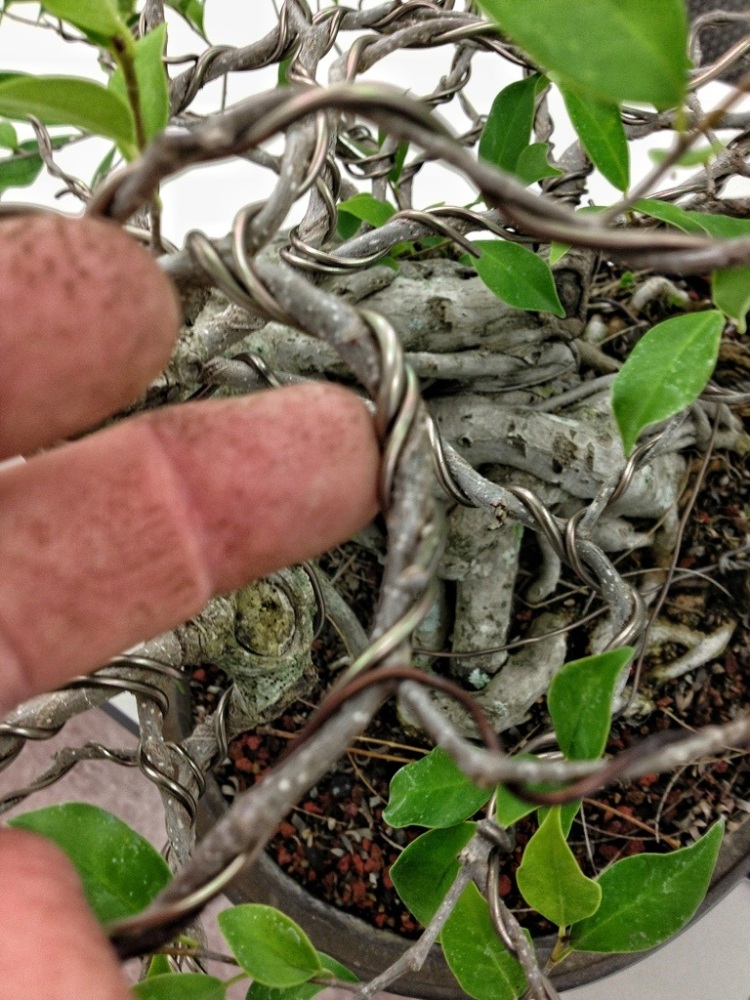
Before I begin, I apologize to Tony; I’m not grilling anything today. I actually had Wendy’s for dinner. Kinda boring.
Onward!
I have not trimmed it (except a little) since I wired it last.
As you might can tell.
My goal was branch thickening and, from the previous post, the experiment was to allow the branches to grow by not cutting the terminal buds.
I had a conversation about this with my friend Erik. He believes that letting it grow without cutting will make the branches thicken faster. He doesn’t use this technique himself, though, because he wants to have a good looking tree at all times.
Conversely, I usually let the trees grow and thicken without too much trimming. But, I suspect that trimming it might thicken a branch faster.
Think about it; the more ramification on a branch the more energy needs to go through the branch etc.
This time I will keep up on the trimming and we will know (at least with this ficus microcarpa) what works best.
Let’s remove the wire..

Quite a bit. The branches did thicken and they were growing strongly; they even raised themselves with the wire on them
This branch..
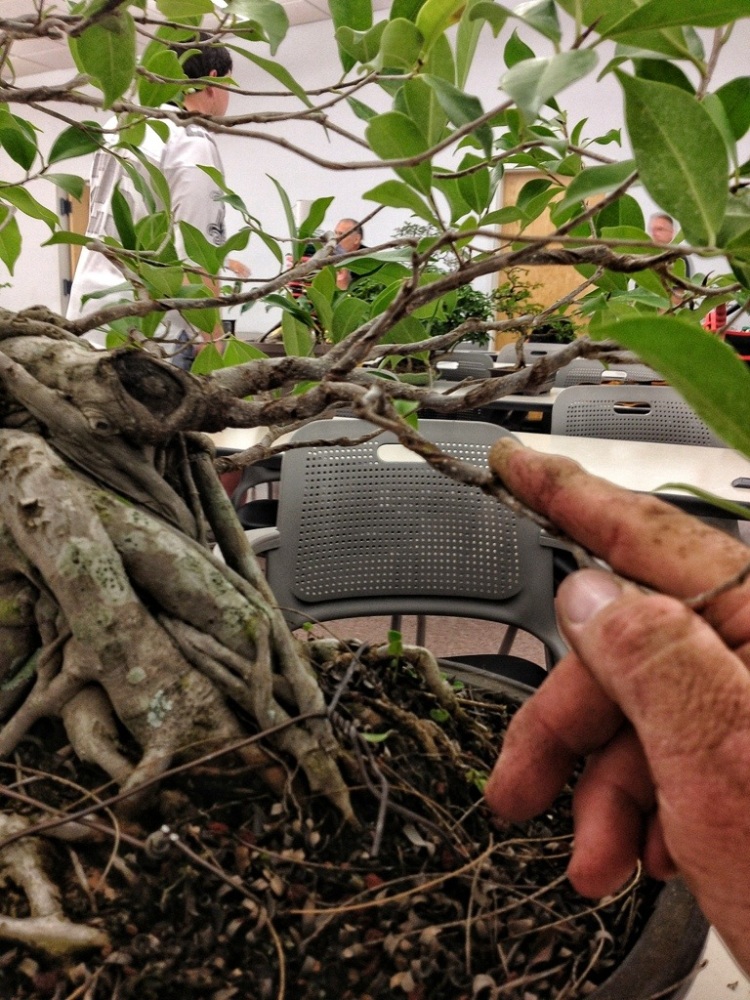
Let’s talk pruning.
This variety of ficus (f. microcarpa) is known for dieback the same way a deciduous tree is. The branch (not the trunk, though.) will die back to the next node.

So when you trim it keep this in mind
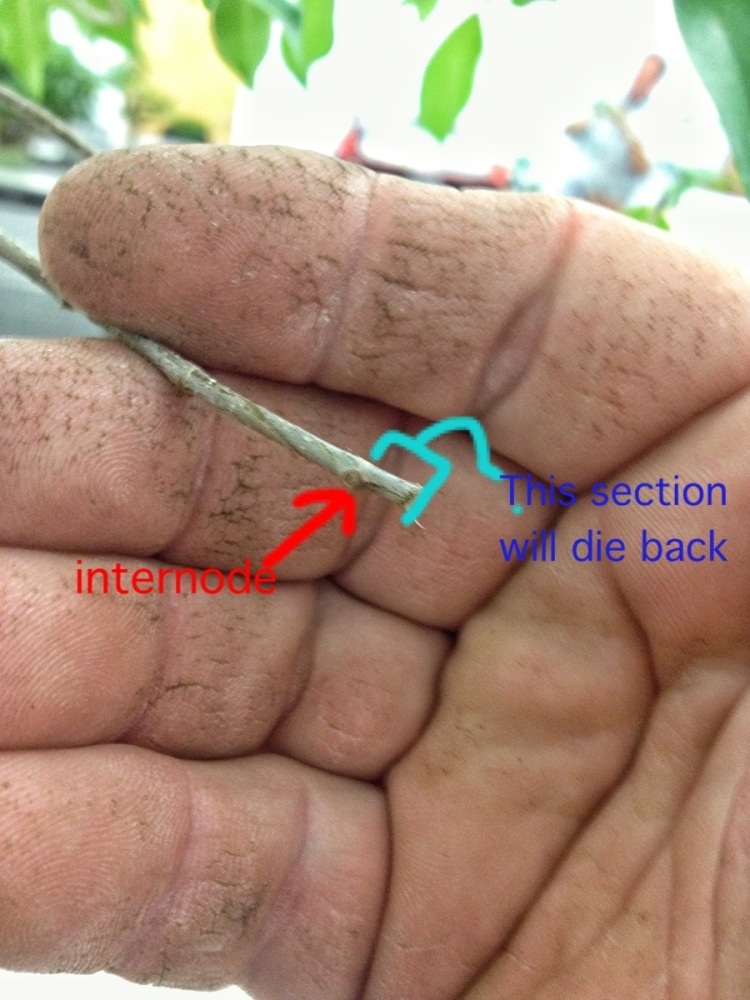
And be prepared for dieback.
A little trimming…

Ok..a lot of trimming and we have this:

I did keep one branch without any trimming. A new one that is desperately needed
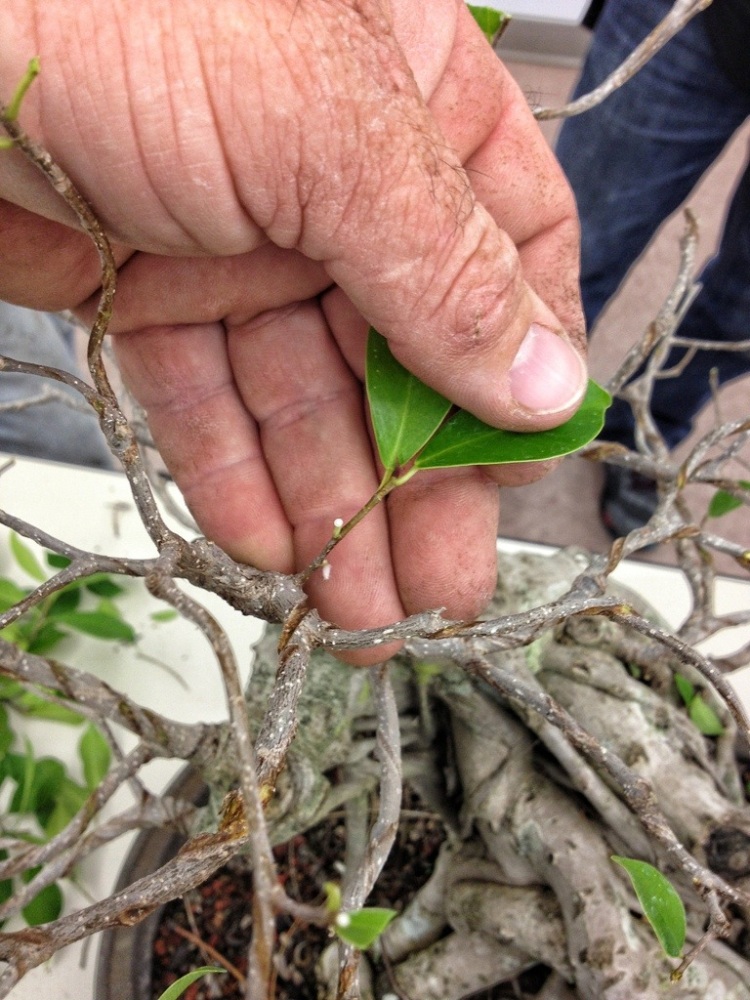
Now to wire it.
Yes, I did just unwire it.
This is a big ficus.
We in the tropical bonsai world spend our time wiring, unwiring, and rewiring ficus. It’s what we do.
Like Sisyphus.
Here’s the example

These branches (like I showed earlier) despite the wire on them, grew up ( but Peter, we all must grow up)

Down, down, down, damn you, you…..limb.
Of all the branches and their placement I’m still worried about this branch..

I may still remove it, but not yet.
And here’s the inevitable bald spot with my one vital, bonsai-design-saving new branch.
So, the question is; did my experiment cause branch thickening?
Here is a pic from the last post:
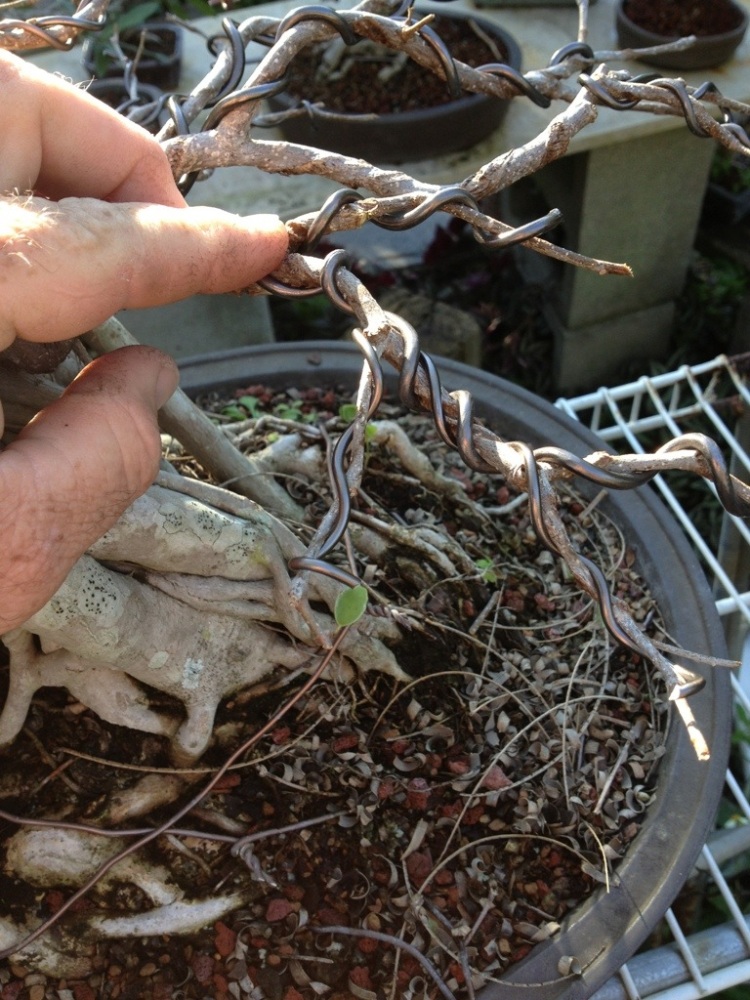
I would say yes. Did it work more than just the normal growth?
I’m not sure.
This time I’ll be keeping the tree in good form and we will be able to compare and contrast.
And now, the much anticipated “after” shots
Side

Rear (everyone loves the “rear”shots it seems)

Here is the previous “after” pic from the first post.
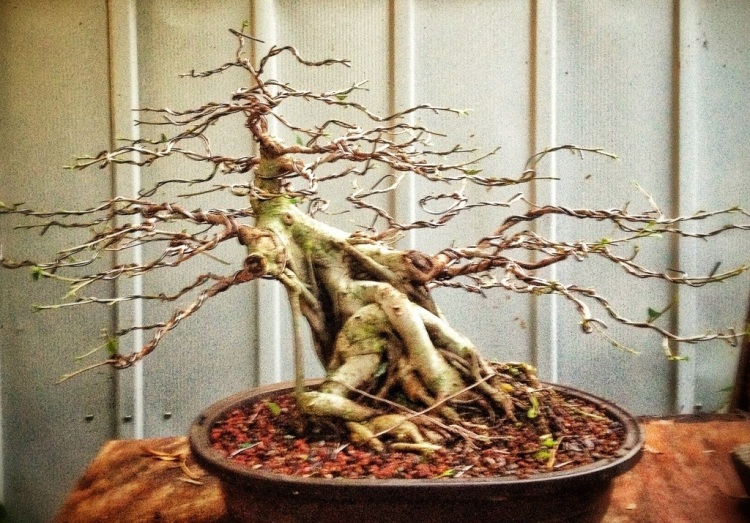
And the final shot ( with a baseball in it for my El Corillo Bonsai)

(What does a baseball with a ficus and El Corillo Bonsai have to do with this update? I’m hoping that I’ll get an invite for a demo in Puerto Rico by showing that I’m a baseball fan, that I do tropical bonsai, and that I have an el corillo to watch my back. A little blatant but it might work.)
See ya’ soon!

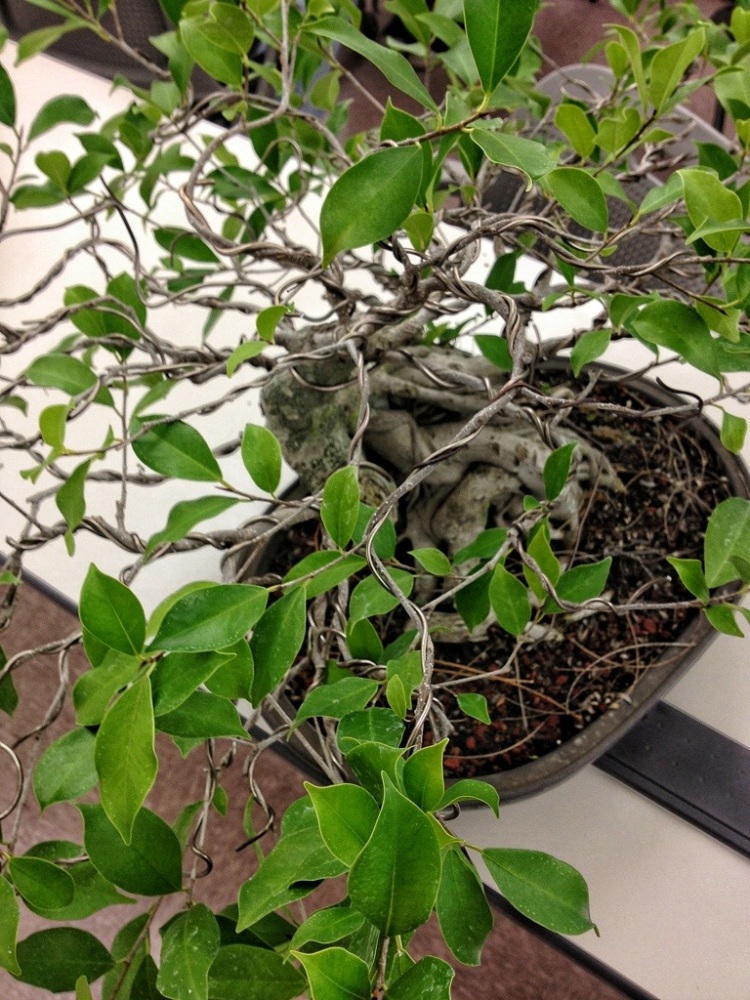
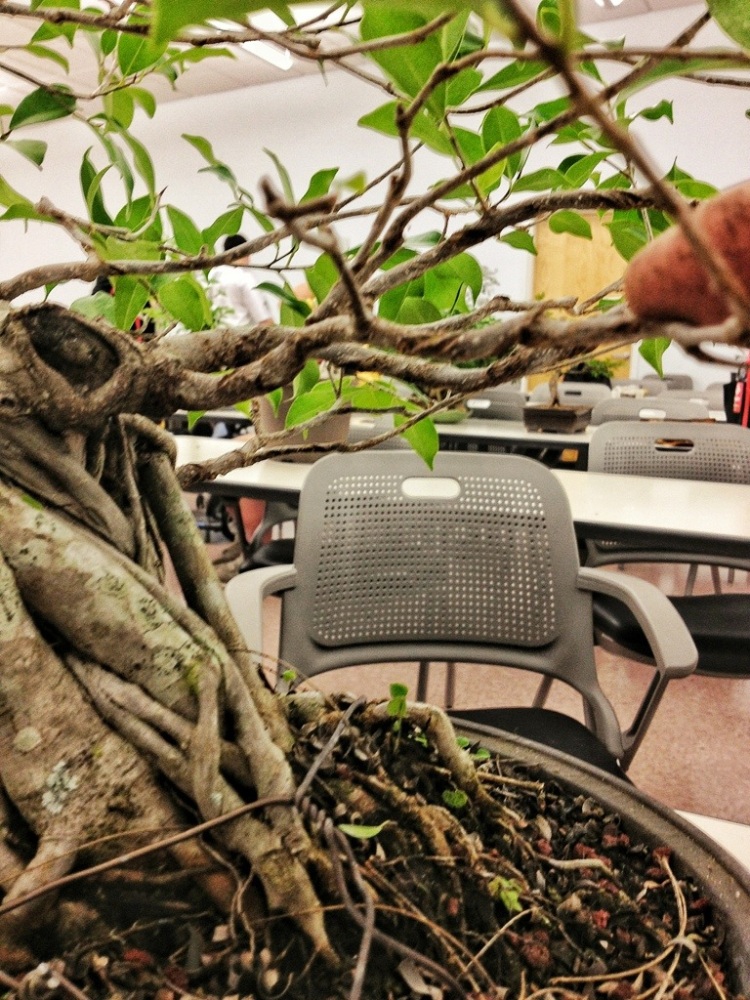




Looks like a banyan tree. Awesome work adam. Thanks for the lesson. Thicker!
LikeLike
Well, it IS a banyan, isn’t it?
LikeLike
Technically, the banyan is the ficus benghalensis. But in bonsai there is a “banyan style” that is a tropical style noted for its aerial roots “propping ” up the limbs. This one is more of an informal upright with aerial roots
LikeLike
What’s your technique for removing wire from wired branches?
LikeLike
I love it when you show updates on this particular tree…
LikeLike